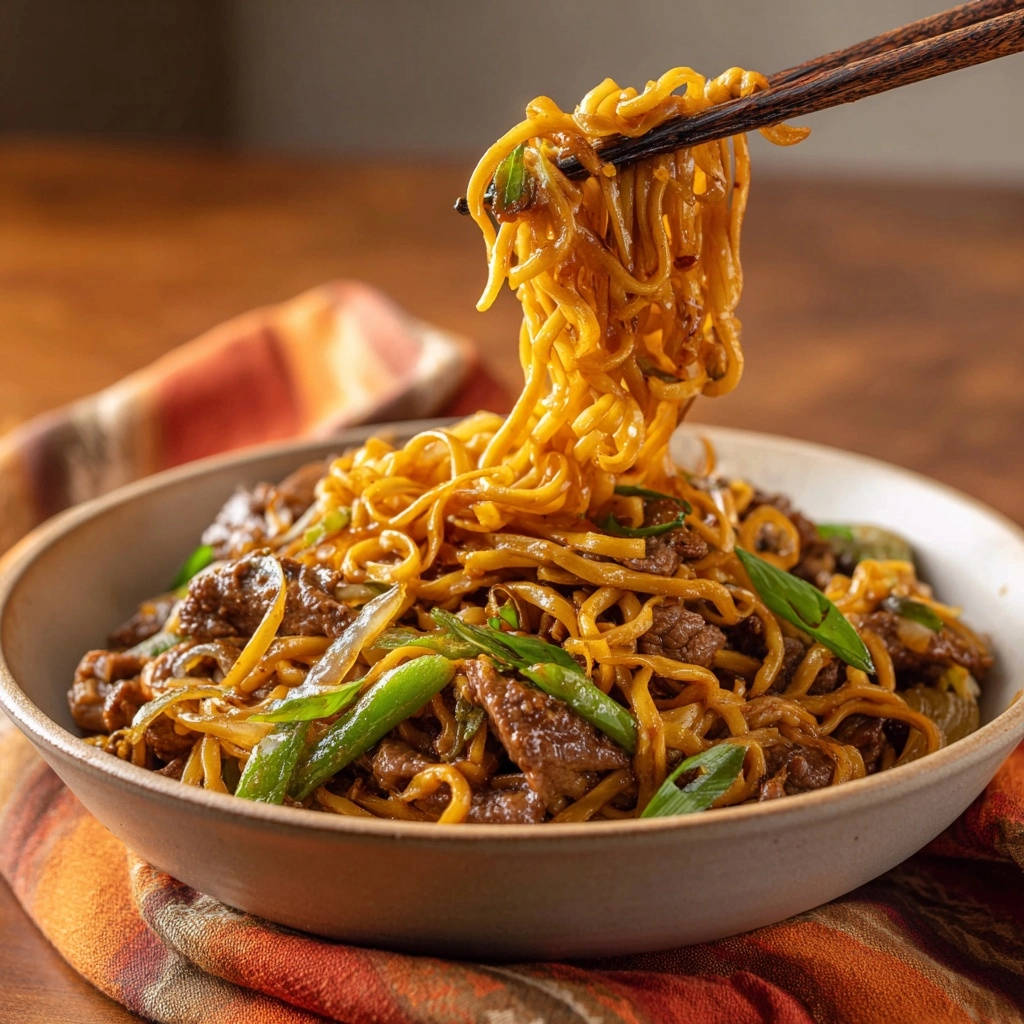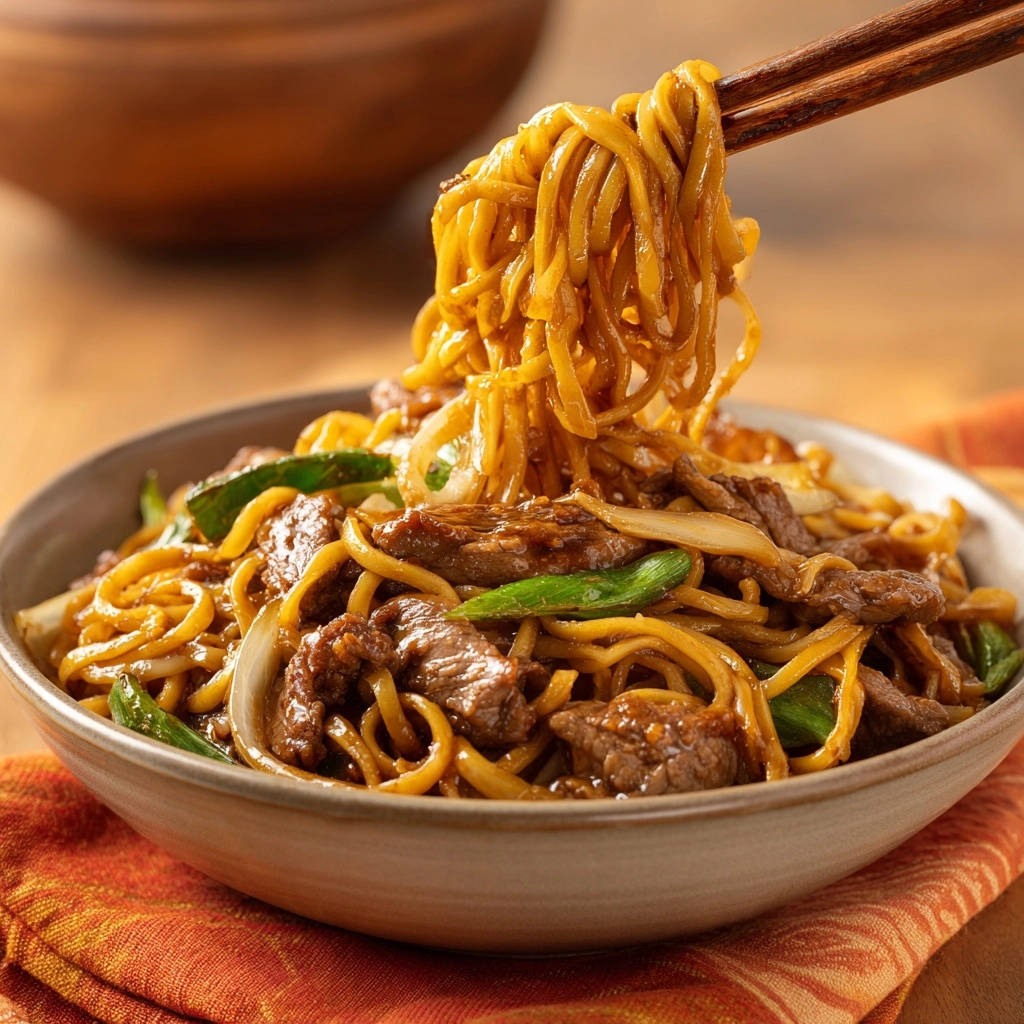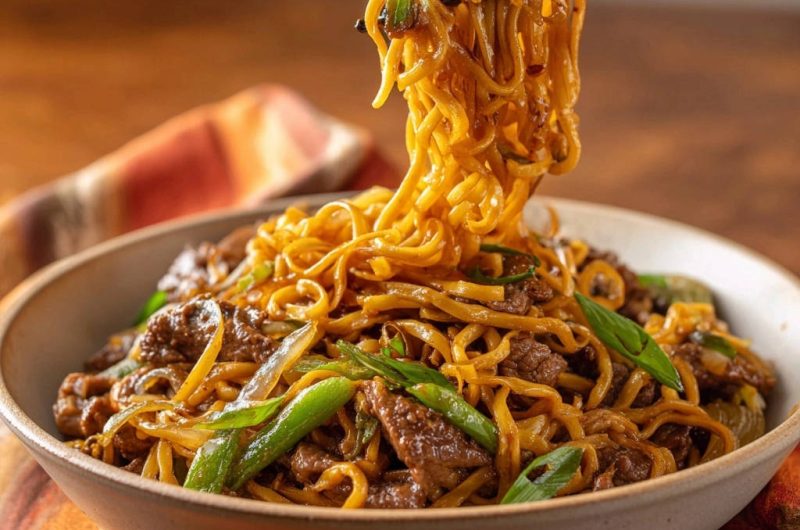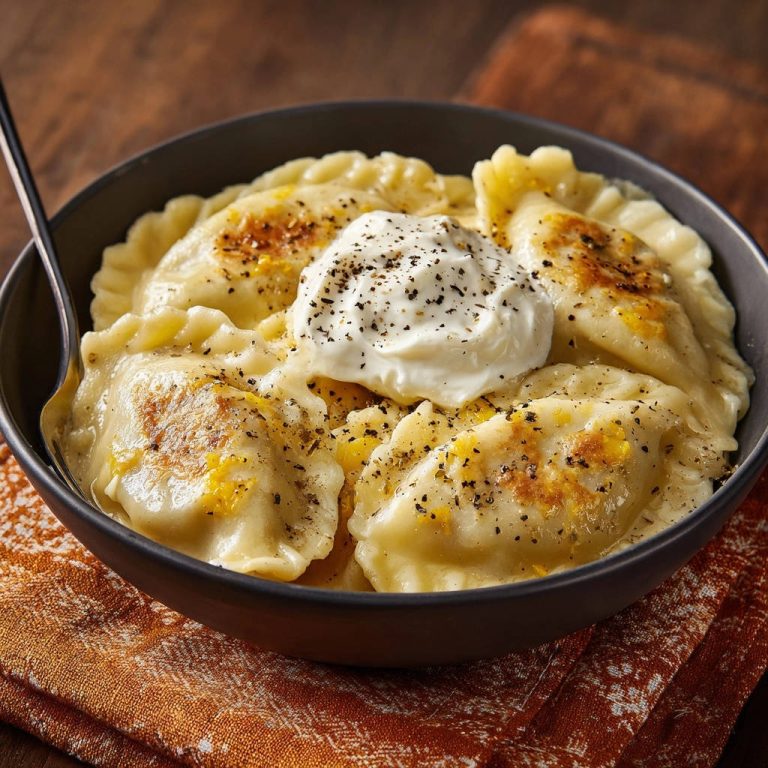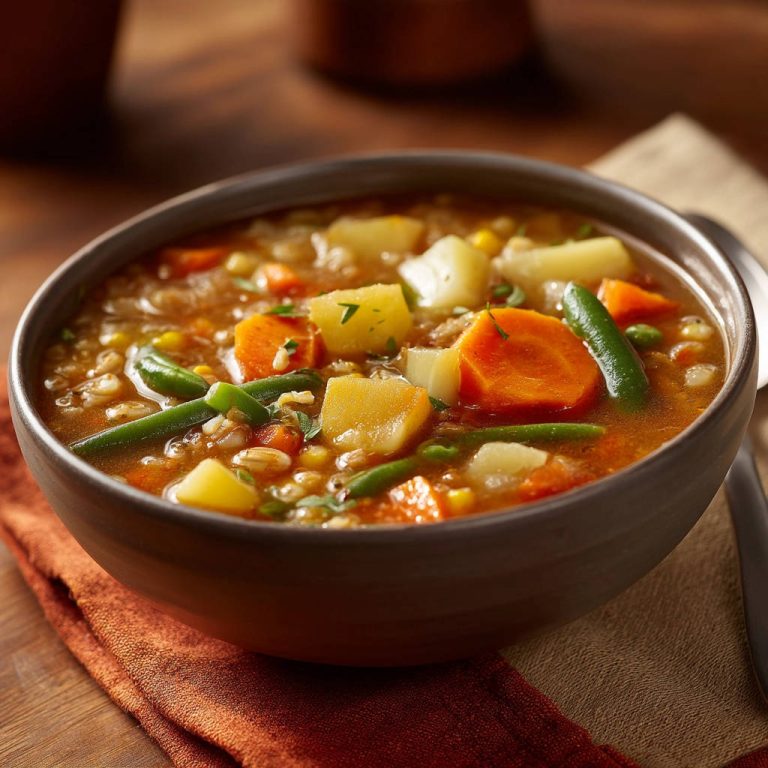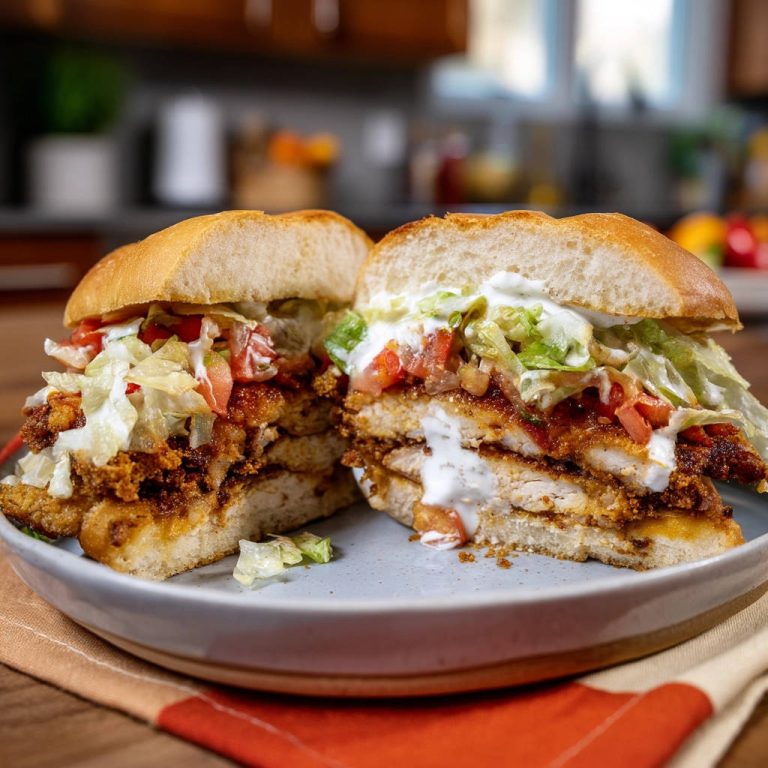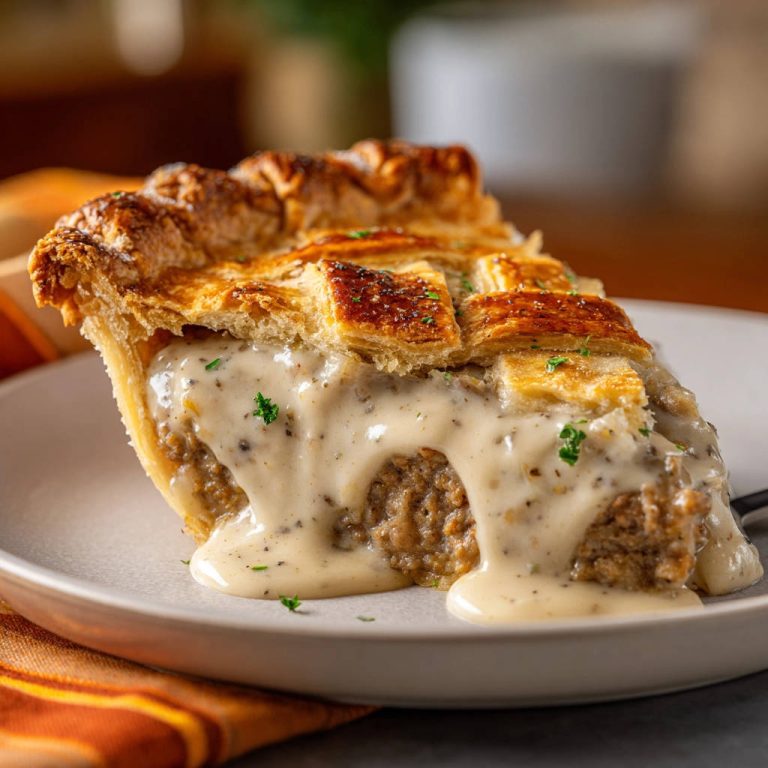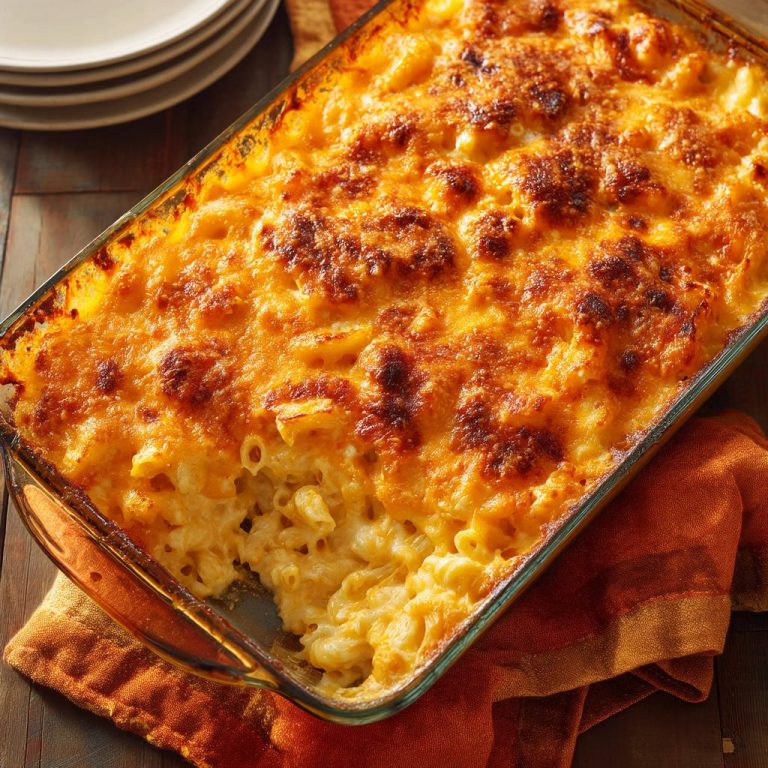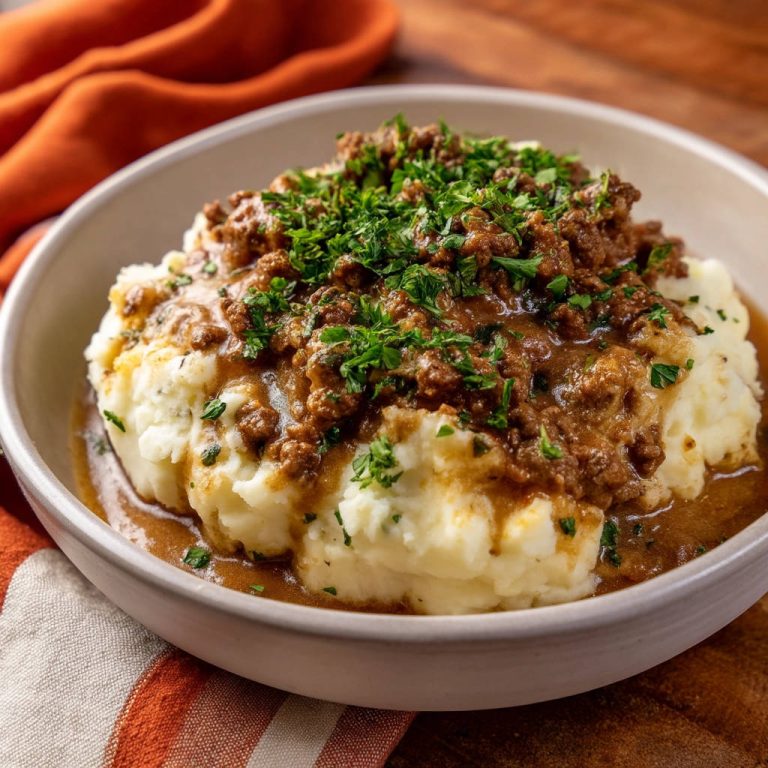There’s nothing quite like a big bowl of warm, saucy noodles with tender beef and crisp veggies. But if you’ve ever ended up with a sticky, clumpy mess instead of perfectly coated, separate noodles, you know how frustrating it can be! My secret to the ultimate Beef and Noodle Stir-Fry lies in one simple trick, guaranteeing that wonderful chewy texture every single time, ready to impress on any busy weeknight.
Why This Beef and Noodle Stir-Fry Belongs in Your Weeknight Rotation
The Secret to Non-Sticky Noodles: Our Foolproof Method
The number one complaint with stir-fried noodles is stickiness. Our foolproof method ensures each strand is perfectly distinct and coated, not clumped together.
The key is to undercook your noodles slightly, draining them meticulously, and rinsing them briefly with hot water to wash away excess starch before a final thorough drain.
Lightning-Fast Prep & Cook: A 30-Minute Masterpiece
Weeknights demand efficiency without sacrificing flavor, and this Beef and Noodle Stir-Fry delivers exactly that. With just 15 minutes of active prep and another 15 minutes to cook, dinner is on the table in half an hour.
This recipe is designed for maximum flavor impact in minimal time, making it a go-to for busy schedules.
Why Sirloin or Flank Steak Reigns Supreme for Stir-Frying
Choosing the right cut of beef is paramount for a tender stir-fry. Sirloin and flank steak are lean yet flavorful, and they cook quickly without becoming tough when sliced properly.
Their inherent texture, when sliced against the grain, becomes incredibly tender in the high heat of a wok, absorbing the delicious sauce beautifully.
Gathering Your Flavor Arsenal: Key Ingredients for Success
The Beef and Marinade Essentials
-
Beef Sirloin or Flank Steak: Select a lean cut, ideally about 1 pound, for tender results. Slicing thinly against the grain is non-negotiable for a melt-in-your-mouth texture.
-
Soy Sauce (divided): A foundational element for umami, used both in the marinade and the sauce. Opt for a good quality brand for best flavor.
-
Cornstarch: This is our magic ingredient for tenderizing the beef and creating a silken, slightly thickened coating. It prevents the beef from drying out during the quick stir-fry.
Crafting the Ultimate Stir-Fry Sauce
-
Soy Sauce: The primary base, providing a rich, salty depth that ties all the flavors together.
-
Oyster Sauce (optional): If available, this adds incredible savory depth and a touch of sweetness. If you don’t have it, a little extra soy sauce or a pinch more sugar can work in a pinch.
-
Rice Vinegar: Introduces a crucial tangy counterpoint, brightening the sauce and balancing the richness.
-
Brown Sugar: A touch of sweetness rounds out the savory and tangy notes, enhancing the overall flavor profile.
-
Water or Broth: Thins the sauce to the right consistency while adding moisture and depth. Broth will contribute more flavor.
Noodle Choices for Perfect Texture
-
Stir-Fry Noodles: Look for egg noodles, fresh udon, or thin rice noodles specifically labeled for stir-frying. They have the right chew and hold up well to tossing.
-
Avoid overly thin or delicate noodles that might break apart or become mushy when stir-fried.
Essential Aromatics & Vibrant Veggies
-
Onion & Bell Pepper: These provide a sweet, earthy base and add beautiful color and texture. Feel free to use any color bell pepper you prefer.
-
Garlic & Ginger: The irreplaceable duo for almost any Asian-inspired dish. Freshly minced garlic and grated ginger are non-negotiable for their pungent, warming aroma and flavor.
-
Green Onions: Added at the very end, they offer a fresh, mild oniony bite and a pop of vibrant green as a garnish.
Essential Tools for Your Beef and Noodle Stir-Fry Adventure
Large Wok or Skillet: Essential for stir-frying. Its wide, sloped sides ensure even heat distribution and provide ample space for tossing ingredients efficiently, preventing steaming.
Tongs or Spatulas: Crucial for quickly tossing and flipping ingredients in the hot pan. Tongs are particularly useful for handling noodles.
Whisk: For smoothly combining your sauce ingredients, ensuring no lumps of cornstarch or undissolved sugar.
Sharp Knife: Key for thinly slicing the beef against the grain and preparing your vegetables and aromatics efficiently.
Your Step-by-Step Journey to Stir-Fry Mastery
Preparing the Star: Beef Marination
-
Marinate the Beef: In a medium bowl, combine your thinly sliced beef sirloin or flank steak with 1 tablespoon of soy sauce and the cornstarch.
Mix everything thoroughly with your hands to ensure each piece of beef is well-coated. This quick marinade tenderizes the beef and prepares it to absorb the sauce perfectly, creating a beautiful “velveted” texture.
The Noodle Trick: Al Dente Perfection is Key
-
Cook the Noodles: Bring a large pot of water to a rolling boil. Add your stir-fry noodles and cook them according to the package directions, but aim for them to be slightly less than fully cooked – quite firm, or al dente.
This is the most critical step for non-sticky noodles. Immediately drain the noodles very, very well in a colander. For an extra measure, you can briefly rinse them with hot water to remove surface starch, then drain again completely. Set them aside while you continue.
Searing the Beef: Lock in Juices and Flavor
-
Sear the Beef: Heat 1 tablespoon of vegetable oil in your large wok or skillet over very high heat until it shimmers. Add the marinated beef in a single layer, ensuring you don’t overcrowd the pan. Cook in batches if necessary.
Stir-fry for only 1-2 minutes per side, just until the beef is beautifully browned on the exterior. It should still be slightly pink in the center, as it will finish cooking later. Remove the beef from the wok and set it aside.
Sautéing Aromatics & Building the Base
-
Sauté Aromatics and Veggies: Add the remaining 1 tablespoon of vegetable oil to the now hot wok. Introduce the sliced onion and bell pepper (if using) and stir-fry for 2-3 minutes until they begin to soften slightly and become fragrant.
Next, add the minced garlic and grated ginger. Continue to stir-fry for another 30 seconds until their potent aroma fills your kitchen. Be careful not to burn the garlic.
Whisking and Simmering the Signature Sauce
-
Prepare the Sauce: In a small bowl, whisk together the remaining 1 tablespoon soy sauce (from the divided portion), the 1/4 cup soy sauce, oyster sauce (if using), rice vinegar, brown sugar, and water or broth until completely combined.
-
Combine and Simmer: Return the seared beef to the wok with the sautéed vegetables. Pour the whisked sauce mixture evenly over everything. Bring the sauce to a gentle simmer, stirring constantly, for about 1-2 minutes until it slightly thickens and coats the beef and vegetables.
The Final Flourish: Tossing for Perfect Coating
-
Add Noodles and Toss: Now, add your well-drained, al dente noodles directly into the wok with the beef and sauce. Using tongs or spatulas, quickly and vigorously toss the noodles with the beef, vegetables, and sauce over high heat for 1-2 minutes.
This rapid tossing motion on high heat is crucial. It finishes cooking your al dente noodles to perfection, ensuring they absorb the sauce and become beautifully coated without ever becoming soft or gummy. Every strand should be distinct and flavorful.
Garnish and Serve Hot
-
Garnish and Serve: Just before serving, stir in the chopped green onions. Their fresh, slightly pungent flavor provides a perfect finish.
Serve your Beef and Noodle Stir-Fry immediately while it’s piping hot to enjoy its best texture and vibrant flavors.
Chef’s Pro-Tips for Next-Level Stir-Fry
Mastering the Wok’s High Heat
Stir-frying is all about speed and high heat. Preheat your wok or skillet until it’s shimmering hot before adding oil, and then ensure your oil is also shimmering before adding ingredients. This quick searing action caramelizes ingredients and locks in flavor.
Don’t Overcrowd the Pan (The Golden Rule)
Overcrowding cools down the pan and steams ingredients instead of stir-frying them. If you have a lot of beef or vegetables, cook them in smaller batches. This ensures beautiful browning and tender textures, preventing a watery, limp result.
Mise en Place: Your Best Friend in Stir-Frying
Because stir-frying is so fast, having all your ingredients prepped, sliced, and measured before you even turn on the heat is essential. This “everything in its place” approach allows for seamless cooking and perfect timing, making the process stress-free.
Customizing Your Vegetable Medley
Feel free to experiment with other stir-fry friendly vegetables! Broccoli florets, snap peas, shredded carrots, or thinly sliced mushrooms would all be delicious additions. Add denser vegetables first to allow them more cooking time.
Balancing Flavors: Sweet, Savory, and Tangy
Taste your sauce before adding it to the wok. If it needs more zing, add a splash more rice vinegar. For extra richness, a tiny bit more brown sugar or oyster sauce can make a difference. Adjust to your personal preference for the perfect flavor balance.
Troubleshooting Common Stir-Fry Snafus
My Noodles Are Sticky or Gummy!
This is usually due to overcooking or insufficient draining. Remember to cook your noodles al dente – they should still have a bite. Drain them incredibly well, and don’t skip the optional hot water rinse to remove excess starch before the final quick toss in the wok.
My Beef is Tough or Dry!
This often happens from overcooking or improper slicing. Always slice the beef very thinly against the grain. The cornstarch marinade also helps tenderize. Sear the beef quickly at high heat for just 1-2 minutes per side; it finishes cooking when tossed with the sauce and noodles.
The Sauce Isn’t Thickening Enough!
Ensure your cornstarch was fully dissolved in the sauce mixture before adding it to the wok. Also, give the sauce enough time (1-2 minutes) to simmer and reduce slightly. If it’s still too thin, you can create a quick slurry with a teaspoon of cornstarch and a tablespoon of water, then whisk it into the simmering sauce until desired consistency is reached.
It Tastes Bland – Where’s the Flavor?
First, check the freshness of your garlic and ginger; stale aromatics contribute less flavor. You might need to adjust the sauce balance: a splash more soy sauce for saltiness, a bit more brown sugar for sweetness, or extra rice vinegar for tang can elevate the taste. Don’t be afraid to taste and adjust!
Frequently Asked Questions (FAQs) About This Dish
Can I Use Other Cuts of Beef?
While sirloin and flank steak are ideal, you can use other quick-cooking cuts like skirt steak or tenderloin. Just ensure they are thinly sliced against the grain for tenderness. Tougher cuts will require longer cooking methods not suited for a quick stir-fry.
What’s a Good Substitute for Oyster Sauce?
If you don’t have oyster sauce or prefer not to use it, you can increase the amount of soy sauce by a tablespoon or two. For a similar depth of flavor, consider adding a pinch of mushroom powder or a very small amount of a rich, dark soy sauce.
How Can I Make This Gluten-Free?
To make your Beef and Noodle Stir-Fry gluten-free, simply use tamari (gluten-free soy sauce) instead of regular soy sauce. Additionally, ensure your chosen stir-fry noodles are certified gluten-free. Many rice noodles are naturally gluten-free, but always check the label.
How Long Does Leftover Beef and Noodle Stir-Fry Last?
Properly stored in an airtight container in the refrigerator, your leftover Beef and Noodle Stir-Fry will last for 3-4 days. For best results when reheating, gently warm it in a skillet over medium heat, adding a splash of water or broth to loosen the sauce.
Can I Prepare This Dish Ahead of Time?
You can certainly prep components in advance. Slice and marinate the beef up to 24 hours ahead, storing it in the fridge. You can also chop all your vegetables and whisk together the sauce ingredients, keeping them separate in airtight containers. Cook the noodles and the full dish just before serving for the best texture, especially for the noodles, to avoid them becoming gummy. For more tips on perfect stir-fried noodles, check out our guide on how to make stir-fried udon noodles without the mess!
Serving Suggestions & Perfect Pairings
This Beef and Noodle Stir-Fry is a complete meal on its own, but it pairs wonderfully with a side of simple steamed white or brown rice to soak up any extra sauce.
For a refreshing contrast, serve alongside a light cucumber salad or some steamed edamame. A sprinkle of toasted sesame seeds or a drizzle of chili oil (if you like a little heat) can also elevate the presentation and flavor.
Storing Your Delicious Stir-Fry for Later
To keep your leftovers fresh and flavorful, allow the stir-fry to cool completely before transferring it to an airtight container. Refrigerate promptly, ideally within two hours of cooking.
When reheating, a quick toss in a hot skillet with a tiny splash of water or broth will help revive the noodles and sauce without overcooking the beef. Avoid microwaving if possible, as it can make the noodles less desirable.
Ready to Wok and Roll? Your Perfect Stir-Fry Awaits!
You now possess all the insider knowledge to create an unforgettable Beef and Noodle Stir-Fry that truly delivers on taste and texture. Say goodbye to sticky noodles and hello to perfectly coated, flavorful strands every time!
Don’t wait – gather your ingredients and experience the satisfaction of a truly excellent homemade stir-fry. I can’t wait for you to try it! If you’re looking for other hearty beef dishes, you might also enjoy our recipe for rich and comforting Beef Ragu, perfect for a cozy meal.
Beef and Noodle Stir-Fry
Course: Main CourseCuisine: Asian cuisineDifficulty: easy4
servings15
minutes15
minutes30
minutesAsian cuisine
Ingredients
1 pound beef sirloin or flank steak, thinly sliced against the grain
2 tablespoons soy sauce, divided
1 tablespoon cornstarch
8 ounces stir-fry noodles (egg noodles or similar)
2 tablespoons vegetable oil, divided
1 onion, sliced
1 bell pepper or other similar vegetable, sliced (optional, based on image)
3 cloves garlic, minced
1 inch ginger, grated
1/4 cup soy sauce
2 tablespoons oyster sauce (if available and desired, otherwise use more soy sauce)
1 tablespoon rice vinegar
1 tablespoon brown sugar
1/4 cup water or broth
2 green onions, chopped
Directions
- In a bowl, combine the sliced beef with 1 tablespoon of the soy sauce and the cornstarch. Mix well and set aside to marinate while you prep other ingredients.
- Cook the noodles: Bring a large pot of water to a boil. Cook the stir-fry noodles according to package directions, but cook them slightly less than the recommended time so they are still very firm (al dente). This is crucial! Drain the noodles very well. Rinsing briefly with hot water after draining can help separate them, then drain again completely. Set aside.
- Heat 1 tablespoon of vegetable oil in a large wok or skillet over high heat until shimmering hot. Add the marinated beef in a single layer (cook in batches if necessary to avoid overcrowding). Stir fry for 1-2 minutes per side, just until browned. Remove the beef from the wok and set aside.
- Add the remaining 1 tablespoon of vegetable oil to the hot wok. Add the sliced onion and bell pepper (if using). Stir fry for 2-3 minutes until slightly softened. Add the minced garlic and grated ginger and stir fry for another 30 seconds until fragrant.
- In a small bowl, whisk together the remaining 1 tablespoon soy sauce, 1/4 cup soy sauce, oyster sauce, rice vinegar, brown sugar, and water or broth.
- Return the cooked beef to the wok with the vegetables. Pour the sauce mixture over everything. Bring to a simmer, stirring constantly, until the sauce thickens slightly.
- Add the noodles: Add the well-drained cooked noodles to the wok. Using tongs or spatulas, quickly toss the noodles with the beef, vegetables, and sauce over high heat for 1-2 minutes, ensuring everything is coated and the noodles heat through but do not sit in the sauce long enough to become soft or gummy. This quick toss on high heat finishes cooking the al dente noodles and coats them perfectly.
- Stir in the chopped green onions just before serving. Serve immediately while hot.
Notes
- The key to perfect, non-gummy noodles is cooking them al dente and a quick, high-heat toss with the sauce at the end.

